The tenth year of Bleeding Heartland’s wildflower series kicks off with a plant that’s a common sight in Iowa woodlands, especially in April. Cutleaf toothwort (Dentaria laciniata), also known as toothwort, is native to every state east of the Rocky Mountains.
According to the Illinois Wildflowers website, favored habitats “include deciduous mesic woodlands, floodplain woodlands, wooded bluffs, and upland savannas. The presence of this species in a woodlands indicates that its soil has never been plowed under or subjected to heavy construction activities.”
The site says cutleaf toothwort “can survive some disturbance caused by occasional grazing and less disruptive activities of human society,” but tends to decline when the invasive garlic mustard becomes prevalent. (Now’s a good time to pull up garlic mustard, if the soil is soft and moist. It’s been so dry in central Iowa lately that I’ve found many of the roots break off.)
Most of the photos enclosed below were taken near my Windsor Heights home. Mary Riesberg also shared pictures she took in Hancock County, Illinois, just across the Mississippi River from Lee County.
Illinois Wildflowers and Minnesota Wildflowers are good resources for botanically accurate descriptions of toothwort foliage and flowers. The origin of the common name “cutleaf” is obvious from the shape of the leaves, which appear in early spring.
Leland Searles, an ecological consultant and photographer, told me “there is some variety in the number of teeth, lobes, and leaflets” on cutleaf toothwort plants.
Minnesota Wildflowers notes, “Leaves are hairless but the stem may be hairy in the upper part.” You can see the hairs in this photograph by Mary, showing the top part of the stem and buds.
The toothwort flowers are opening in this shot.
Top view of a plant with flowers.
Leland Searles took the next two pictures while doing a plant survey on our property in 2014.
Mary Riesberg took the next two pictures.
Janette Foust gave me permission to share this lovely image. You can see the variety in leaf shape that Leland mentioned.
That’s Dutchman’s breeches (another woodland flower that blooms in the early spring) on the left and toothwort on the right.
Virginia bluebells are considerably taller than cutleaf toothwort plants and typically bloom a bit later. Only a few buds are opening in this image.
I didn’t have good luck finding seedpods on nearby toothwort plants after the flowers were gone. Animals may have eaten them. The foliage turns yellow before it disappears. In the lower right part of this photo, spring beauty is blooming.
More toothwort foliage turning yellow near spring beauties.

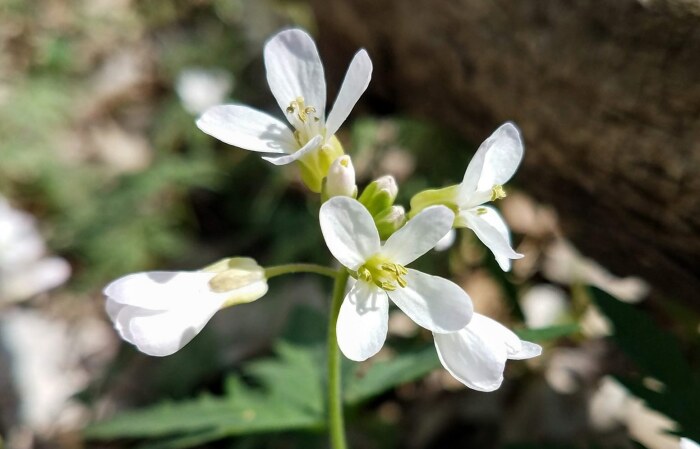

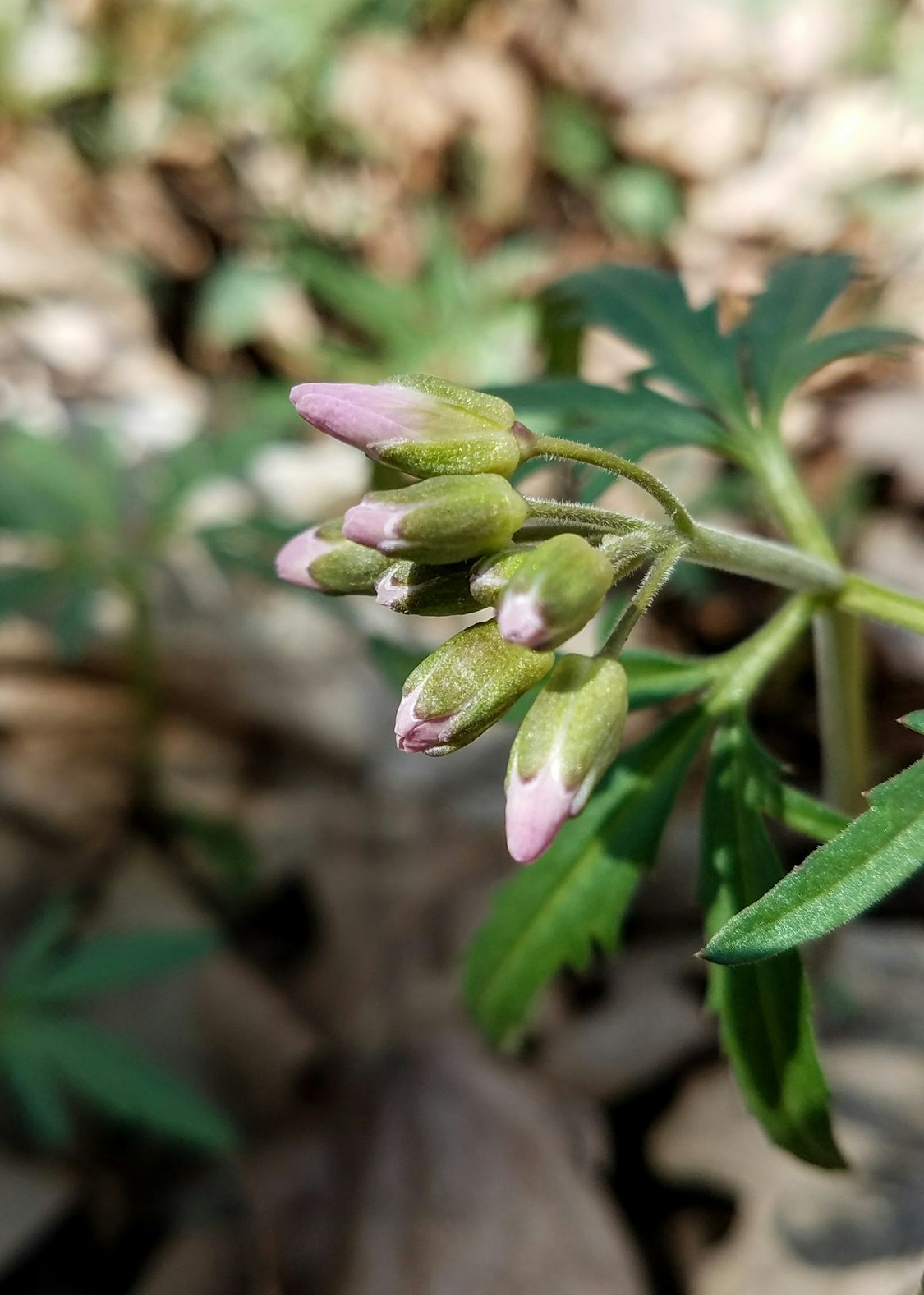

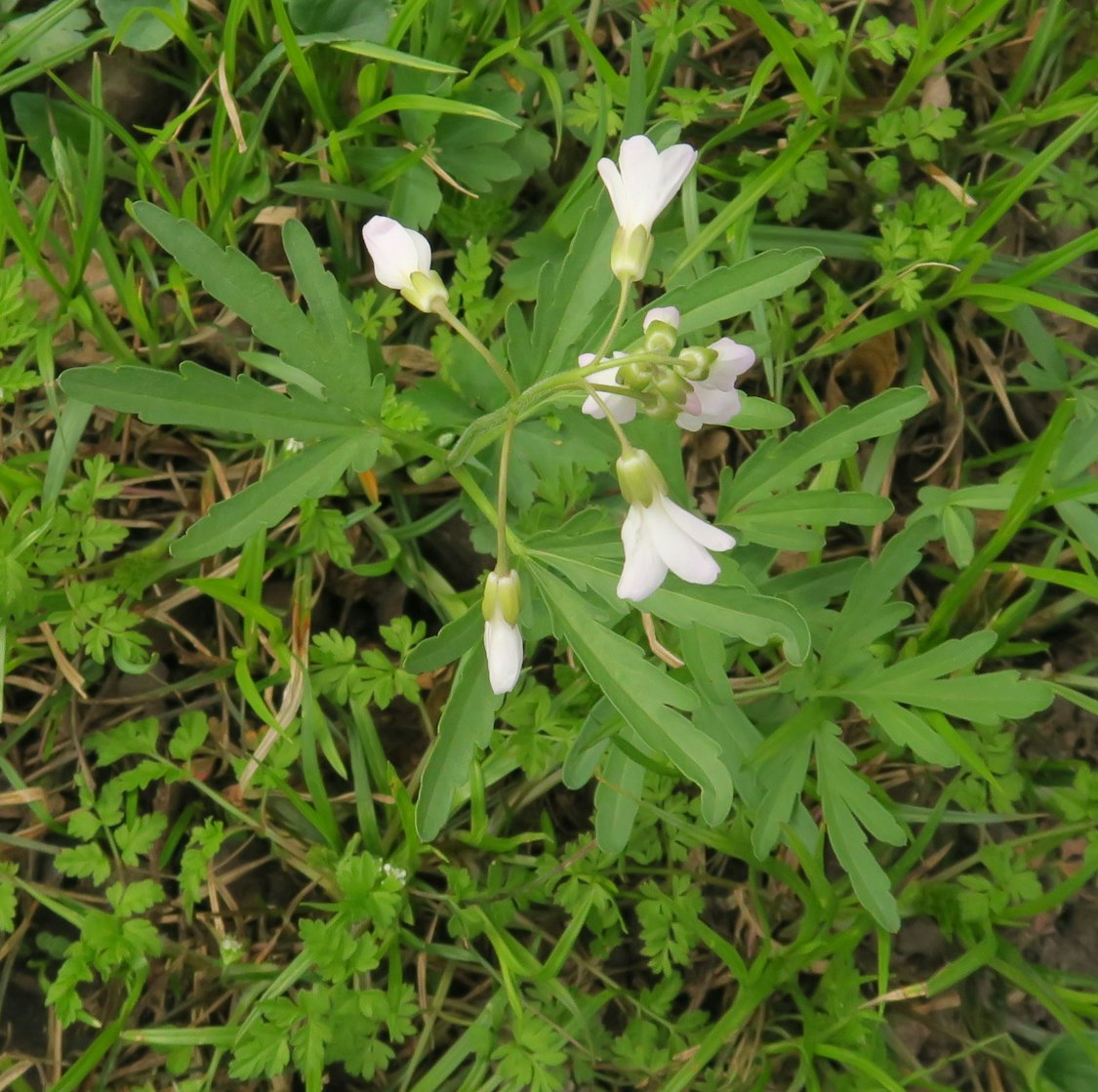


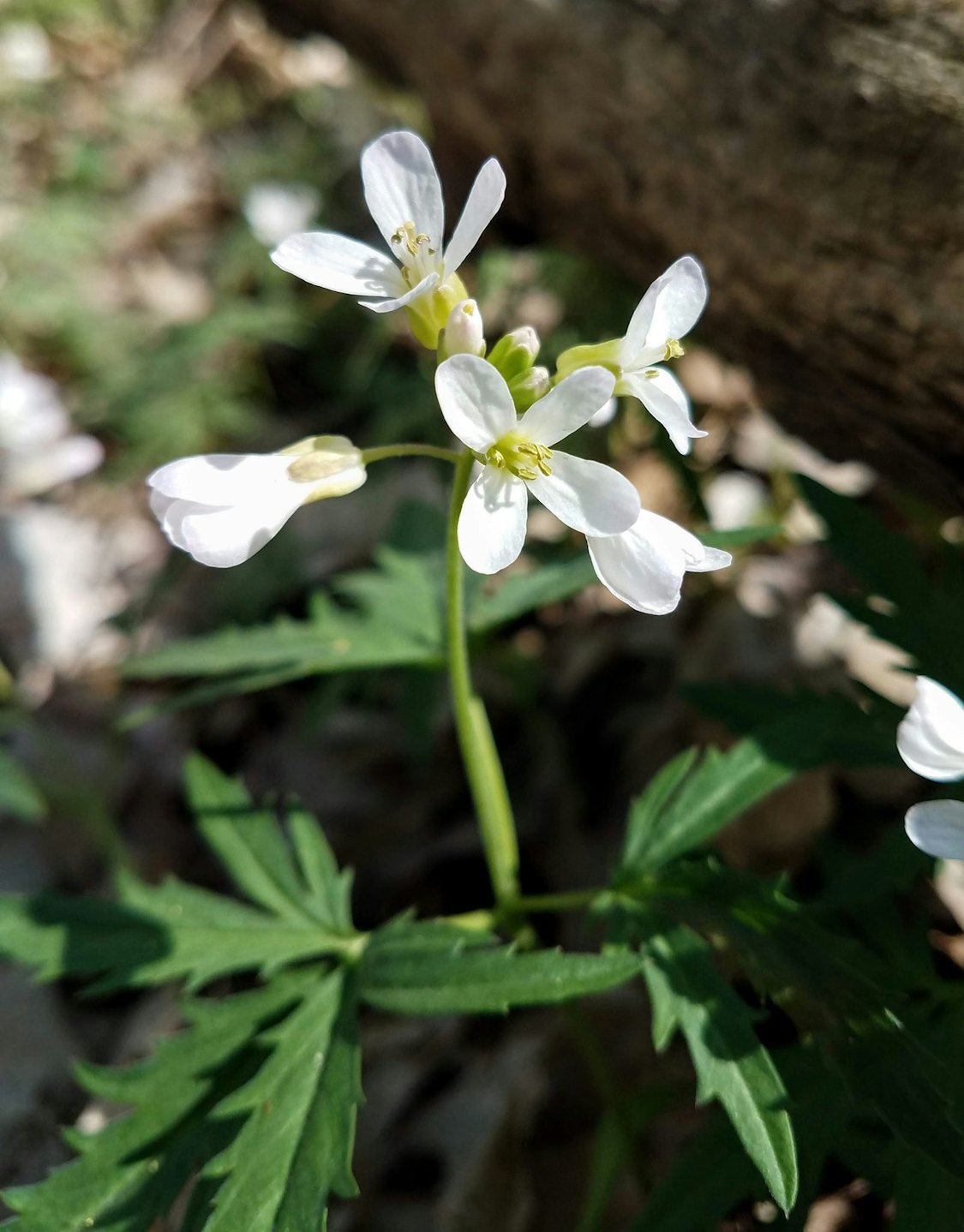




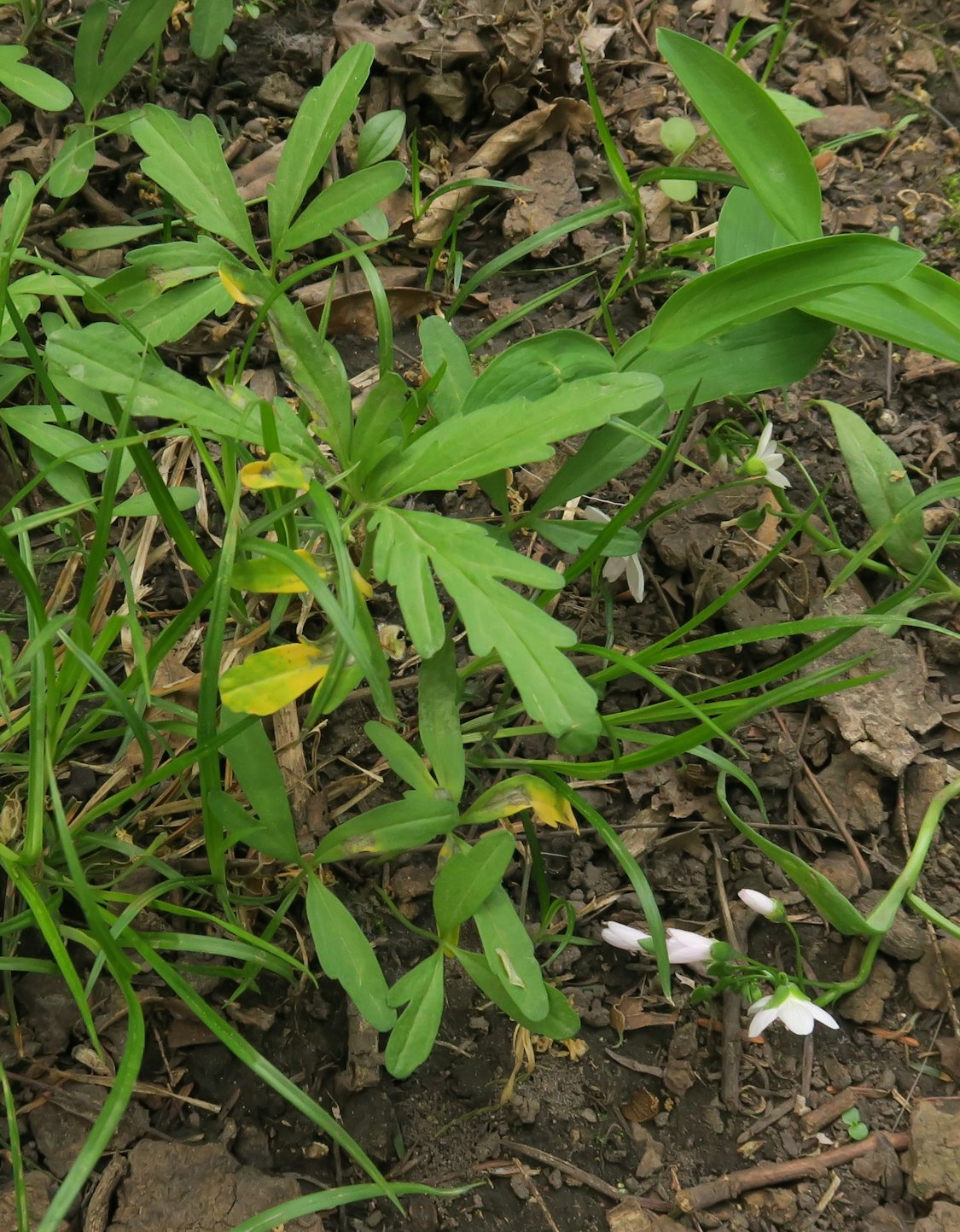

1 Comment
Yay, Wildflower Wednesday is back!
The top photo brought back a sudden happy vivid memory of a spring botany class decades ago.
PrairieFan Wed 5 May 8:11 PM